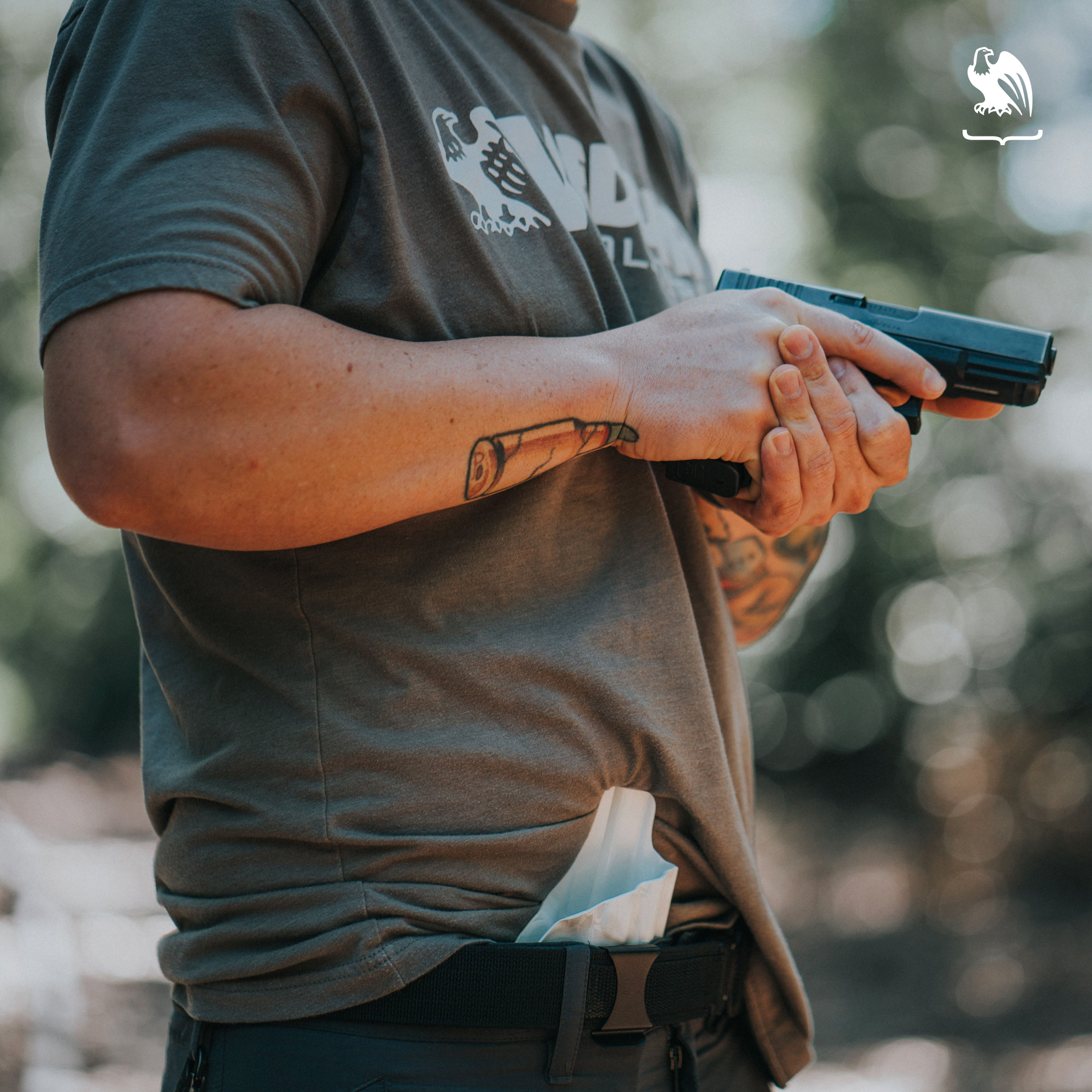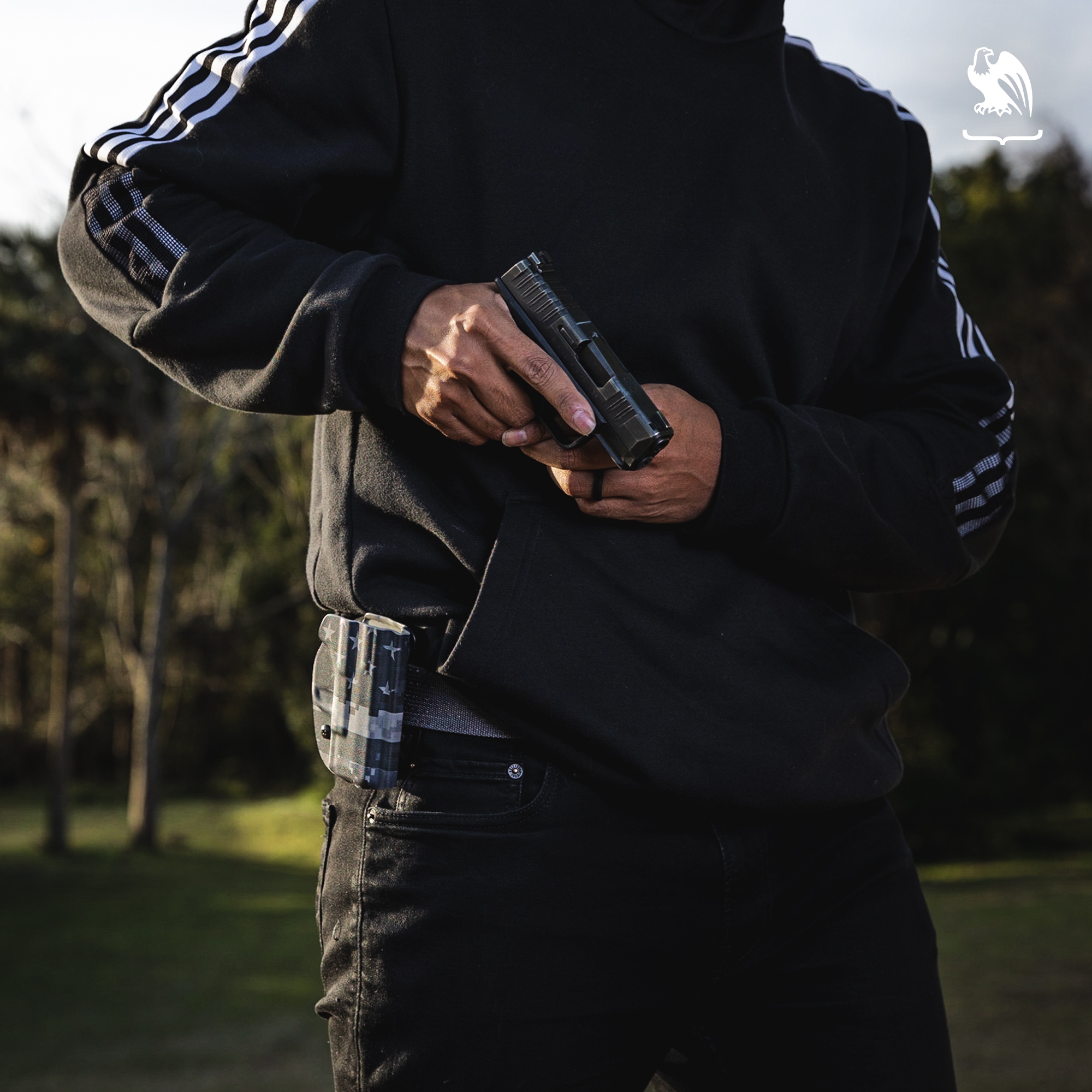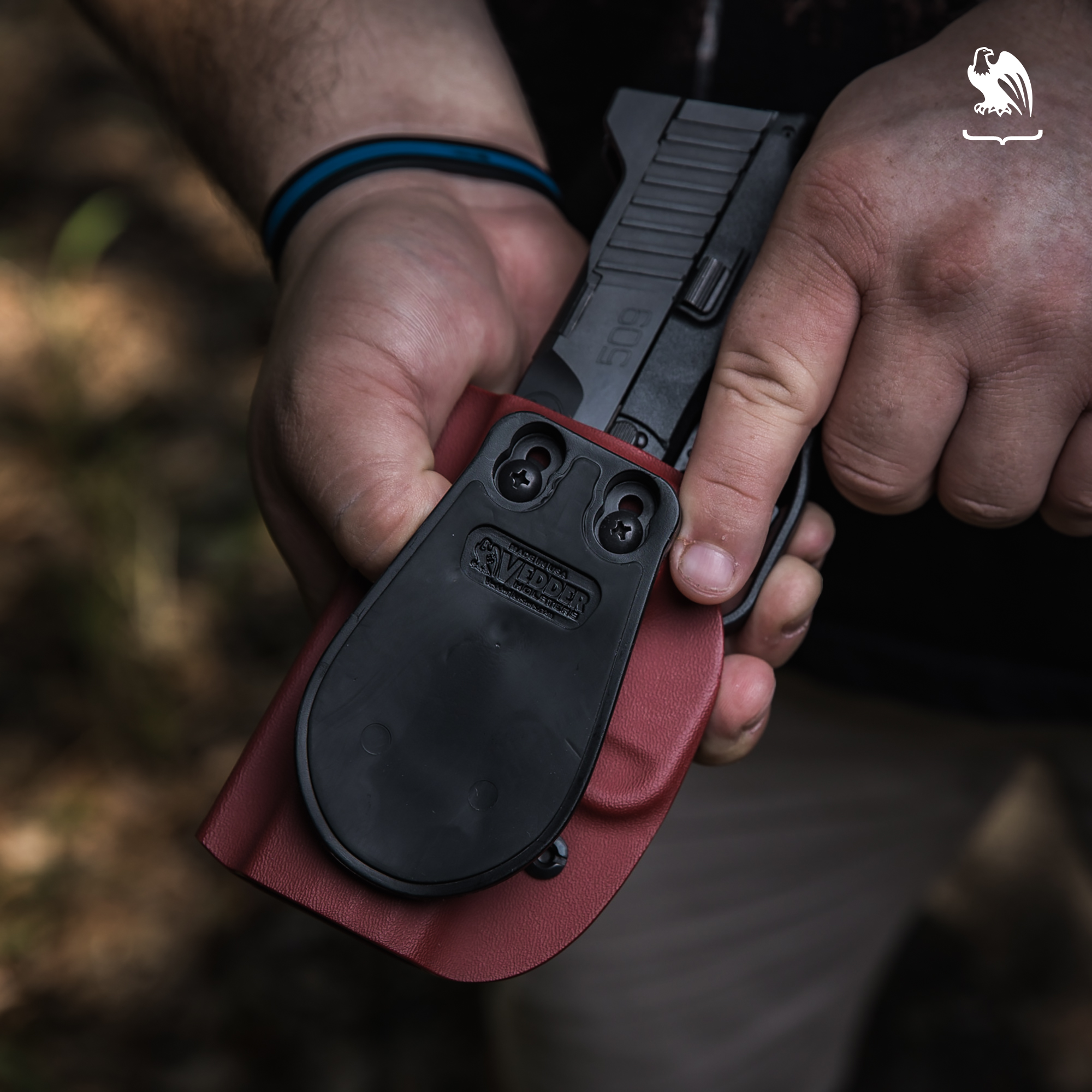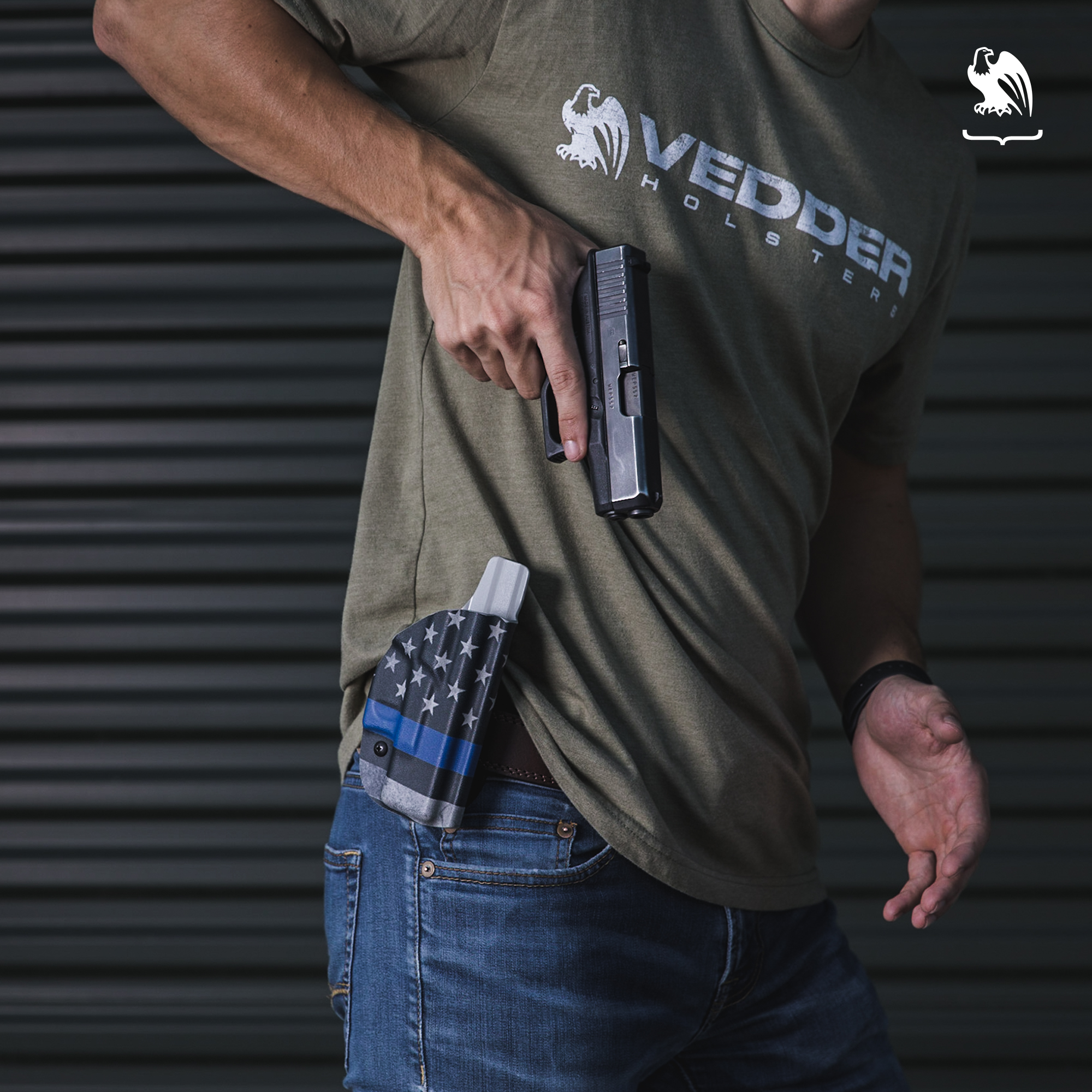What Is A Trigger Reset And Why Is It Important?

Whether you’ve been training for a long time or you’re brand new to the gun world, you’ve probably heard talk of the importance of trigger control. But what exactly does it mean to reset your trigger, and why is it such a big deal?
Trigger reset is the act of releasing the trigger after a shot only to the point where it reaches its reset point and “clicks,” allowing you to fire again.
Not only do many trainers use the technique as a way to teach trigger control, but it can arguably make you a faster and more accurate shooter when done correctly.
What Is Trigger Reset, And How Do I Do It?
Trigger reset, or riding the reset as it’s sometimes called, is the point after a shot at which the trigger and the sear are re-engaged within the firing mechanism allowing you to shoot again. You should hear and feel an audible “click” as it resets.
Essentially, trigger re-setters believe that once your index finger has been placed on the trigger of a firearm, it should not lose contact until you’re finished shooting. The process is simple:
- After you’ve fired, don’t let go of the trigger. Hold it back until you’ve realigned your sites with the target.
- Once you’ve confirmed your sight picture, slowly relax your finger until you hear and feel the click indicating it has reset, and don’t let it go any farther.
- Take your next shot and repeat.
The idea behind riding the reset is to improve speed and accuracy by making it so your finger doesn’t have to refind the trigger each time you take a shot. This also helps keep your weapon from moving around unnecessarily, which helps you keep your eye on the target.
Trigger Slap: What Is It And Is It A Problem?

Trigger slapping is basically just the opposite of reset. Instead of keeping your finger on the trigger as you allow it to reset, your finger loses contact with the trigger, allowing it to “slap” back into position.
While there’s nothing inherently wrong with this method, some experts even prefer it because it allows you to fire more quickly, trigger slap will more than likely impact your accuracy, even if just by a hair.
“If you’re releasing your trigger finger all the way … [then] you have to reacquire your trigger finger on the trigger and fire the shot, and that can move your sight a little bit off target,” Kevin Michalowski, Executive Editor of Concealed Carry Magazine, said in a video for the U.S. Concealed Carry Association.
For advanced shooters who want to shoot fast but aren’t overly concerned about their groupings, slapping the trigger might actually be the way to go. But for newer shooters, those looking to hone their accuracy, or anyone who wants to improve their trigger discipline, resetting is probably a better technique.
Why Is Trigger Reset Important?

Those on team reset argue that trigger reset is important for several reasons. First, it reduces unnecessary movement. When you let go of the trigger each time you shoot, you let go of a little bit of control. Trigger slapping could cause you to jerk the trigger, which can cause the gun to move slightly and put your trajectory off target.
Second, trigger reset improves your aim by keeping the shot’s recoil from disturbing your sight alignment as much. When you ride the reset, you’re less likely to move the gun, even if just slightly, when replacing your finger on the trigger. It also makes it so your next shot has a shorter trigger pull, meaning it’s less likely that your aim will waiver while you pull the trigger.
Third, it improves speed once you’ve got the method down. When you let go of the trigger, it takes time, even if just milliseconds, to get your finger back in the proper place. Keeping your finger on the trigger eliminates this issue entirely and ensures your finger placement stays where it should.
Michalowski says that riding the reset can improve your trigger control any time you’re shooting more than one round and is something you should probably train yourself to do.
“The importance of trigger reset in accurate shooting is when you’re shooting multiple rounds, especially target shooting, especially slow timed fire,” Michalowski says. “It’s quick, it’s smooth, and it keeps you on target.”
How To Practice Trigger Reset
There are countless trigger control drills you can do to practice and improve trigger reset. Try a few to see which works best for you, or mix it up to stay on your toes. Remember, the reset point will be different for every pistol you own, so be sure to practice with each one!
While it’s important to take your gun to the range to practice, you can also run through most drills at home through dry fire training. To do this, you’ll need to manually rack the slide each time you pull the trigger to reset the firing mechanism. Some people find it easier to use a trigger reset kit for dry fire practice, like this one from DryFireMag.
Here are a few training exercises to get you started:
Drill 1:
Load 10 rounds into your magazine. Aim and take your shot. Once you’ve fired, keep your finger on the trigger and relax it slowly, taking about three seconds to do so, just until you feel it click, then stop. Take a moment, then fire again. Try to focus on getting good groupings on your target. Each time the trigger resets, take note of how it feels.
This drill is designed to help you get familiar with how the reset feels on your gun and establish muscle memory.
Drill 2:
Now that you have a feel for your gun’s unique reset, it’s time to speed things up a bit.
Load your gun’s magazine with ten rounds. For this drill, you will be making two successive shots at a time.
To get started, take aim and fire. Instead of slowly releasing the trigger, quickly release it until you feel it click. Remember not to let your finger break contact with the trigger! Then, immediately fire another round. After the second shot, let the trigger out all the way and start over. Repeat five times.
This drill should help you practice successive shots and gain speed. Note how the trigger pull is shorter on the second shot since you only let it go to the point of reset.
Drill 3:
For this drill, you will need to fill two or more magazines with three rounds each. Do exactly what you did in Drill 2: shoot, release to the point of reset, shoot again. Keep it quick and deliberate. Once you’ve fired all three rounds, release the magazine and load the next one. Then do it all again. When you’re finished, check your groupings to see how consistent you were.
This drill is designed to help you build consistency and forces you to reacquire your target in between magazines. It keeps you on your toes and mixes things up so you can continue to get more comfortable with timing and feeling the reset.
For more great reset drills, check out the USCCA’s YouTube channel here.
How To Speed Up Your Reset

The biggest problem with riding the reset is that it can slow down your shots, at least at first. And that’s okay, and even encouraged, while training and going through drills. However, if you’re a competition shooter, or you just want to shoot faster without sacrificing accuracy, there are ways you can speed up the reset process without trigger slap.
Steve Horsman of Springfield Armory likes to teach his students how to reset the trigger while the gun is still in recoil to save time.
“Why would I want to spend a lot of time letting the trigger reset when I could actually be doing it while the gun's in recoil,” he said in a video demonstrating the technique.
Instead of waiting until after the gun recoils to release the trigger so you can hear the reset click, Horsman encourages shooters to release it during recoil, relying instead on feeling the click so that you’re ready to shoot again as soon as the muzzle is done flipping.
“If you guys go out there and use that technique, first off, you're going to see yourself shooting a lot faster, a lot more accurate, and you're going to notice that a lot of things start to get better for you,” he said.
If you’re new to the concept of resetting your trigger, however, it’s important to remember that technique is more important than a fast reset. A speedy reset may not actually save you any time at all if your form is lacking, Jeff L. Gonzales, tactical trainer and president of Trident Concepts, LLC, wrote in a The Truth About Guns article.
“Many shooters think the faster they reset, the faster they can fire the next shot. There is some truth to that, but you can only shoot as fast as your sight alignment dictates,” he said. “It does no good to be in a hurry to reset your trigger if your technique slows you down while you get your sights back on target. I promise that it takes more time to confirm a good sight picture than it does to reset the trigger.”
For new shooters, Gonzales recommends after taking a shot to first realign the gun on the target, set your site, and then reset the trigger before firing again. It may take more time initially, but it can help you get your form down before trying a more advanced reset like Horsman’s.
Whether you choose to reset during recoil or after, it takes time to master the skill. Don’t be discouraged if it slows you down at first. Practice makes perfect, and the process will become faster and more habitual with time.
Is Trigger Reset Really Necessary? Will It Work In Defensive Shooting?

While many in the industry feel that pistol trigger control is an extremely important part of shooting, others say it doesn’t make enough of a difference to matter.
The main argument against riding the reset is that adrenaline will be running high in the stress of a defensive situation, and you won’t be thinking about your reset. Firearms expert and field editor for Shooting Illustrated Bryce M. Towsley wrote in an article for the magazine that he prefers trigger slapping over reset not only for the speed benefits but also because of potential safety concerns.
“I suppose it [trigger reset] has some merit for teaching entry-level shooters, to help make them more aware of how the trigger works, and to add focus on the trigger early in the learning curve,” he wrote. “For serious pistol shooting in a defensive or competitive situation, however, it seems to me like it will slow down split times between shots and has the potential to confuse the shooter when he or she needs to be thinking clearly. That confusion can result in a short stroke so the trigger fails to reset, resulting in lost points in competition, or disaster in a defensive situation.”
Others, however, believe that if one resets their trigger during training, it will create muscle memory that will carry over into a stressful situation. If you train enough, it shouldn’t be something you have to think about in the heat of the moment; it should just become how you shoot your firearm. After all, we shoot how we train, right?
Perhaps the answer to whether reset is necessary falls somewhere in the middle. Michalowski says that while you should learn trigger reset as it does help with accuracy and control, it’s probably not something you’ll actually need to remember to use in a defensive situation.
“At combat distances and combat speed, I don’t really see that just releasing to the trigger reset is something you automatically have to do,” he said. “It’s something you should probably train yourself to do because it does help your shooting, but if in a very high-stress situation, your trigger finger loses contact with the trigger, and you have to reacquire and pull the trigger again, I’m more interested in where your front sight is going to be than where your trigger finger is and what you’re doing with your reset.”
Should I Practice Trigger Reset?
While some believe it is unnecessary, many experts agree that trigger reset is a beneficial practice, at least for training purposes. Not only is it a great way to exercise trigger control, but it can actually make you a faster and more accurate shooter when done correctly.
While the decision is ultimately up to you, we encourage anyone who hasn’t tried riding the reset to give it a shot. You just might discover a new technique that will take your shooting game to the next level.
If you are looking for belts or holsters, check out some of our Vedder Holsters products here. Like everything we sell, our holsters and gun belts are covered by a Lifetime Warranty and a 30-day money-back guarantee.
Looking for items beyond holsters and belts? Check out our Resources Page for popular product links like lights, laser, first aid, maintenance, and more.

